
Authentic Pasta Preparation Guide
Follow Italian Tradition
The article explains why Italians never break pasta before cooking—it's about respecting tradition and the proper eating experience. This tool helps you prepare pasta authentically.
Recommended Pasta Shapes for Authentic Cooking
- Spaghetti, Linguine, Fettuccine: Best served whole to maintain the twirling experience
- Rigatoni, Penne, Fusilli: Good alternatives if you need shorter pasta
- Broken Pasta: Only acceptable for baked dishes or soups
Ask an Italian why you can’t break pasta before cooking it, and they’ll look at you like you just suggested putting ketchup on pizza. It’s not about rules written in stone-it’s about respect. Respect for the food, the hands that made it, and the centuries of tradition that shaped how Italians eat. This isn’t a quirk. It’s a deeply rooted cultural signal. And if you’ve ever wondered why this matters, especially when you’re making tiramisu or any other classic Italian dish, you’re not just learning about pasta-you’re learning about the soul of Italian cooking.
Pasta Wasn’t Made to Be Broken
Spaghetti, linguine, fettuccine-these are long, thin strands of dough made from just flour and water, sometimes eggs. They’re rolled, cut, and dried with precision. The length isn’t an accident. It’s intentional. In Italy, pasta is meant to be twirled. Twirled around a fork, slowly, deliberately, letting the sauce cling to every curve. Break it, and you lose that ritual. You lose the connection between the eater and the food.
Think about it: if you snap a strand in half, you’re left with short pieces that slide off the fork. You need a spoon. You need to scoop. You’re no longer eating pasta-you’re eating noodles. And that’s not Italian. It’s Americanized. Or worse, it’s lazy.
There’s a reason nonnas in Naples don’t keep scissors in the kitchen. They don’t need them. They cook pasta whole. They serve it whole. And they eat it whole. The act of twirling isn’t just practical-it’s part of the experience. It slows you down. It makes you present. That’s why breaking pasta feels wrong to them. It’s not about being rigid. It’s about honoring the rhythm of a meal.
The Tiramisu Connection
You might be wondering: what does this have to do with tiramisu? Everything. Tiramisu isn’t just a dessert. It’s a mirror of Italian values. It’s made with layers-ladyfingers soaked in coffee, mascarpone cream, cocoa powder. Each layer has its place. You don’t crush the ladyfingers. You don’t mix the cream into the coffee. You build. You respect the structure.
Just like pasta, tiramisu relies on integrity. Break the ladyfingers? You ruin the texture. Stir the layers together? You lose the contrast. You turn a delicate dessert into a mushy mess. Italians don’t do that. They don’t cut corners in the kitchen, even when no one’s watching. Because the food is the message.
When you break pasta, you’re sending a signal: I don’t care about how this was meant to be eaten. When you make tiramisu with crushed biscuits and mixed layers, you’re doing the same thing. It’s not about perfection. It’s about intention. And Italians notice.
History Doesn’t Break Easily
Pasta has been around for over a thousand years. The long strands we know today became popular in the 18th century, when drying techniques improved. Before that, pasta was often short, like today’s penne or rigatoni. But once long pasta became common, it stuck. Why? Because it worked. It held sauce better. It tasted better. And it fit the way Italians lived.
Before refrigerators, before supermarkets, before frozen food, Italians ate seasonally. They made pasta by hand. They dried it on balconies. They cooked it in large pots over wood fires. The length of the pasta matched the size of the pot, the length of the fork, the rhythm of the family meal. Breaking it would’ve meant wasting time, wasting effort, wasting pride.
That’s why even today, in small towns in Emilia-Romagna or Sicily, you won’t see anyone breaking spaghetti. Not at the dinner table. Not in the kitchen. Not even when they’re cooking for a crowd. They use longer forks. They twirl harder. They adjust their chairs. They don’t change the pasta.

It’s Not About Rules. It’s About Identity.
There’s no law in Italy that says you can’t break pasta. You won’t get fined. You won’t be kicked out of a restaurant. But you’ll get a look. A quiet, knowing look. Because in Italy, food isn’t just fuel. It’s heritage. It’s memory. It’s who they are.
When you break pasta, you’re not just altering a cooking method. You’re ignoring a thousand years of cultural continuity. You’re treating a symbol as if it’s disposable. And that’s the real issue.
Think about your own traditions. Maybe you never eat turkey on Thanksgiving unless it’s stuffed with sausage and cranberries. Maybe you always eat dumplings on New Year’s Eve. Those aren’t rules. They’re anchors. They keep you connected to your past. For Italians, pasta is that anchor. Breaking it is like skipping a family story. You can do it. But you’ll feel it.
What About Long Pasta in a Small Pot?
One common excuse: “My pot is too small.” That’s not a valid reason. Italians don’t use giant pots because they have to-they use them because they want to. The right pot is part of the process. If you don’t have a big enough pot, buy one. Or cook less pasta. Or use a different shape.
There are over 350 types of pasta in Italy. If long pasta doesn’t fit your kitchen, switch to rigatoni, penne, or fusilli. They’re just as delicious. And they’re made to be eaten without twirling. No judgment. No guilt. Just practicality.
But if you’re making spaghetti? Then honor it. Use a large pot. Boil it al dente. Let it cool slightly before tossing with sauce. Don’t rinse it. Don’t break it. Don’t overcook it. Let it be what it was meant to be.
When It’s Okay to Break It (Yes, There Are Exceptions)
There’s one place where breaking pasta is not just accepted-it’s expected: baked pasta dishes. In southern Italy, especially in Campania and Calabria, it’s common to break spaghetti into shorter pieces before baking it in a timballo or pasta al forno. That’s because the dish is meant to be sliced like a casserole. The texture changes. The purpose changes.
But here’s the key: even then, it’s done with care. The pasta isn’t snapped randomly. It’s cut with scissors or broken into even lengths. It’s still treated with respect. It’s still part of a tradition. It’s just a different tradition.
And if you’re making a soup with pasta? Then yes, break it. In minestrone or pasta e fagioli, short pasta works better. But that’s not spaghetti. That’s a different dish. Different rules.
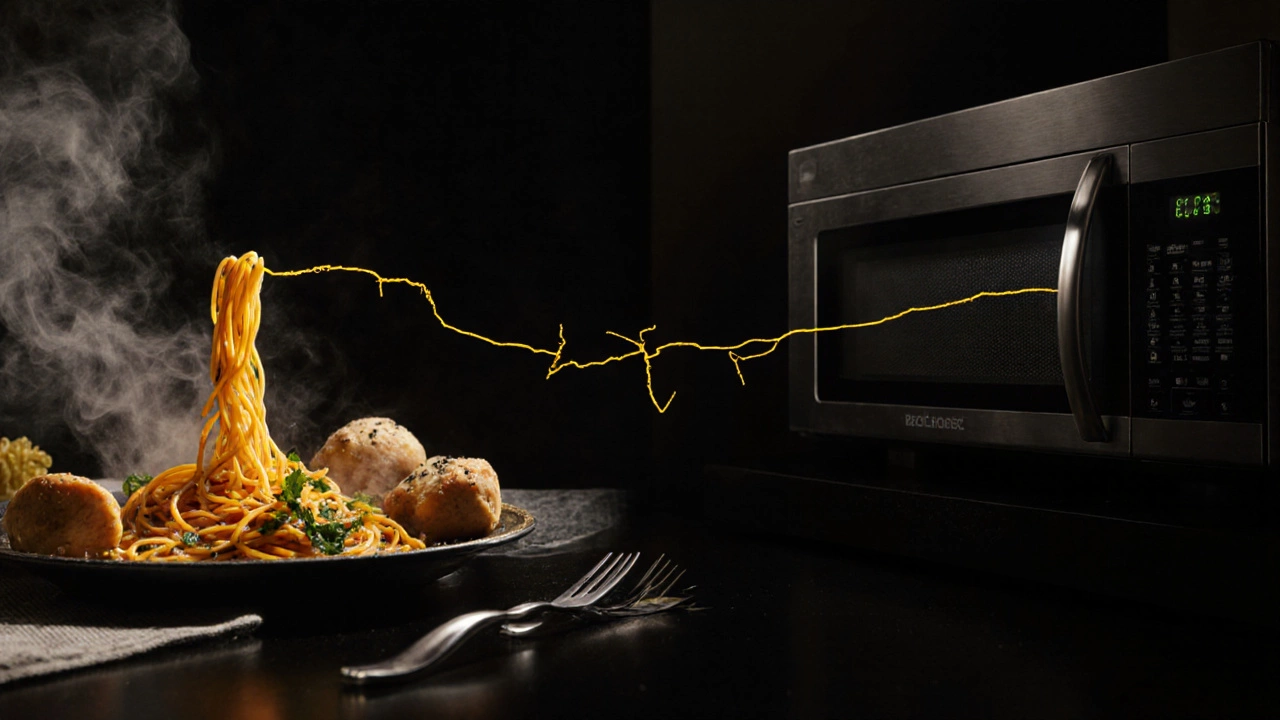
Why This Matters Outside Italy
When you break pasta in New Zealand, Australia, or the U.S., you might think no one cares. But you’re wrong. People notice. Especially people who care about food. They notice when you serve overcooked, broken spaghetti with a forkful of sauce that slides off. They notice when your tiramisu has soggy layers because you crushed the ladyfingers.
It’s not about being perfect. It’s about being thoughtful. It’s about asking: Why is this done this way? What does it mean? What am I losing if I change it?
Food is the easiest way to connect with culture. You don’t need to speak Italian. You don’t need to visit Rome. You just need to cook pasta the way Italians do-and understand why.
How to Eat Pasta the Italian Way
- Use a large pot with plenty of salted water-about 1 liter per 100g of pasta.
- Don’t add oil to the water. It prevents sauce from sticking.
- Boil until al dente-firm to the bite, not mushy.
- Reserve a cup of pasta water before draining. It helps bind the sauce.
- Toss the pasta with sauce in the pan, not the bowl. Heat it together.
- Use a fork only. No spoon. No knife.
- Twirl gently. Let the sauce cling.
- Never break the pasta before cooking.
That’s it. No magic. No secret ingredients. Just attention.
What to Do If You’ve Been Breaking Pasta All Along
If you’ve been snapping spaghetti since you were a kid, don’t panic. You’re not a bad cook. You’re just unaware. Start small. Next time you make spaghetti, leave it whole. Try twirling it. See how the sauce wraps around. Notice how the texture changes. Taste the difference.
Then try making tiramisu. Use whole ladyfingers. Dip them quickly-just a second in coffee. Layer them neatly. Don’t press down. Let the cream sit. Wait an hour. Then serve it as it was meant to be: layered, clean, elegant.
You’ll taste the difference. Not because the ingredients changed. But because you changed how you treated them.
Is it really rude to break pasta in Italy?
It’s not rude in the way of being offensive-it’s more like showing ignorance. Italians won’t yell at you, but they’ll notice. It’s like wearing sneakers to a formal dinner. Not illegal, just out of place. They see it as a lack of respect for tradition.
Can I break pasta if I’m cooking for kids?
Yes, if the child can’t twirl it yet. But don’t make it a habit. Use shorter pasta shapes like penne or macaroni for kids. That way, you’re still respecting the tradition while adapting for practicality. Breaking spaghetti is a shortcut, not a solution.
Why do some restaurants serve broken pasta?
Some non-Italian restaurants break pasta because they think it’s easier to serve. Others do it because they don’t know better. In Italy, even chain restaurants serve long pasta whole. If you see broken pasta in a place claiming to be Italian, it’s a red flag.
Does breaking pasta affect the taste?
Not directly. But it changes the experience. Whole pasta holds sauce better and gives you more control over each bite. Broken pieces are harder to eat neatly, and they often end up overcooked because they’re smaller. The flavor doesn’t change-but the enjoyment does.
What’s the best pasta shape for tiramisu?
None. Tiramisu doesn’t use pasta. It uses ladyfingers-savoiardi. These are light, dry biscuits designed to soak up coffee without falling apart. Using pasta in tiramisu would be like using bread in a cake. It’s not the right ingredient. Stick to the classic.
If you want to understand Italian food, start with pasta. Not because it’s the most complex dish. But because it’s the most honest. It doesn’t need sauce to be good. It doesn’t need decoration. Just water, heat, and time. And respect.


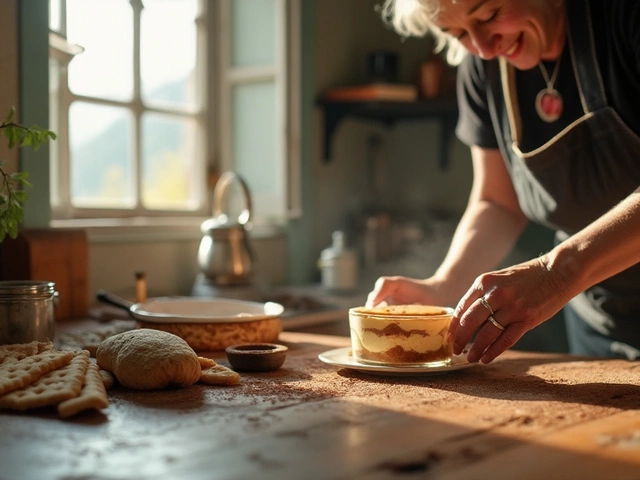

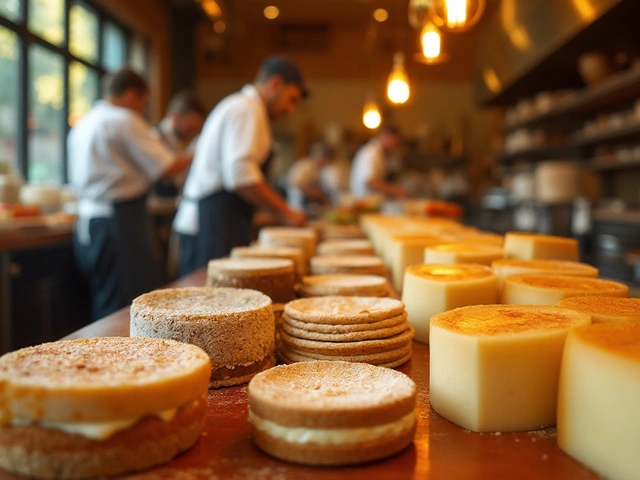
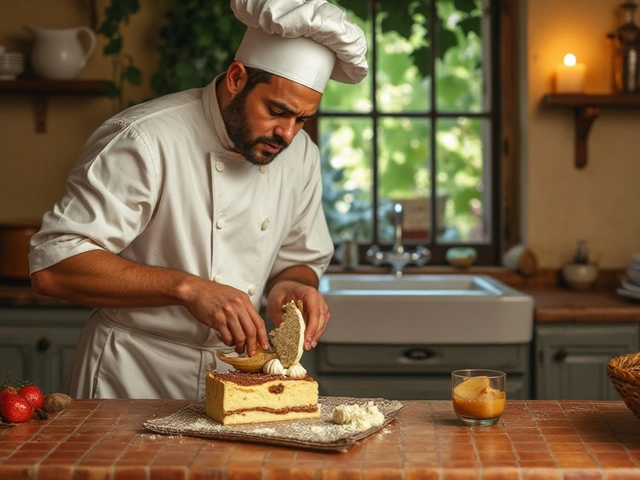





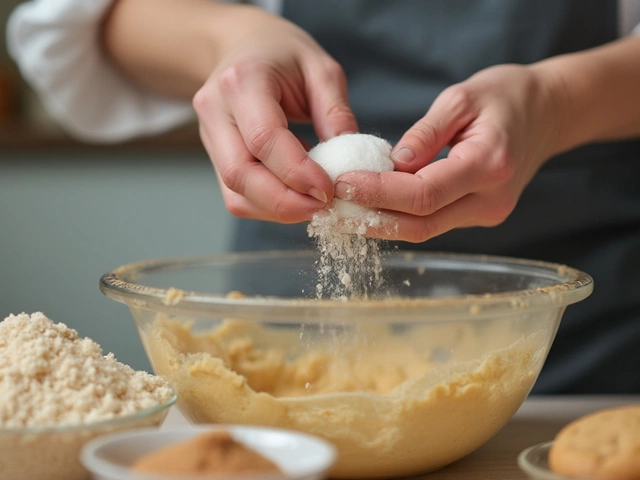
Write a comment